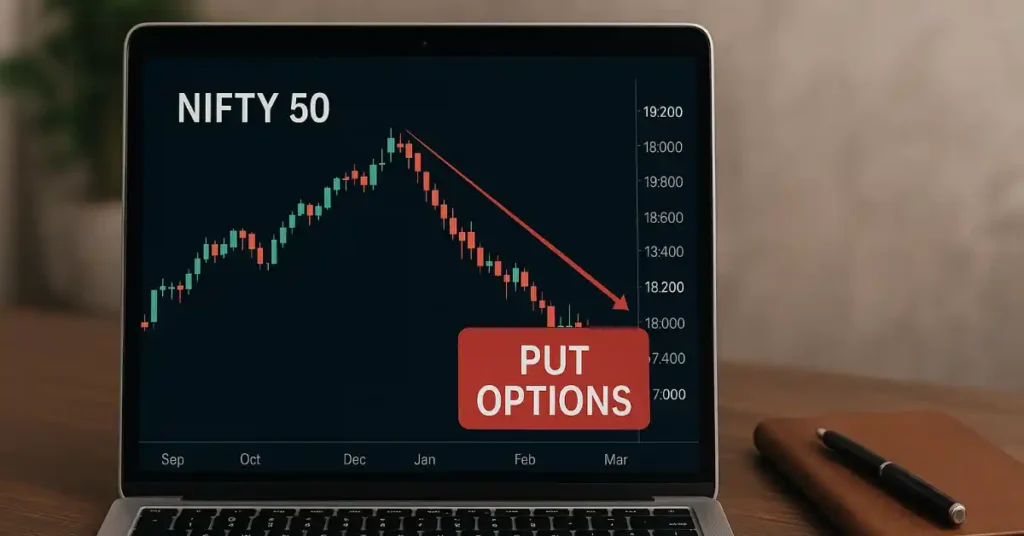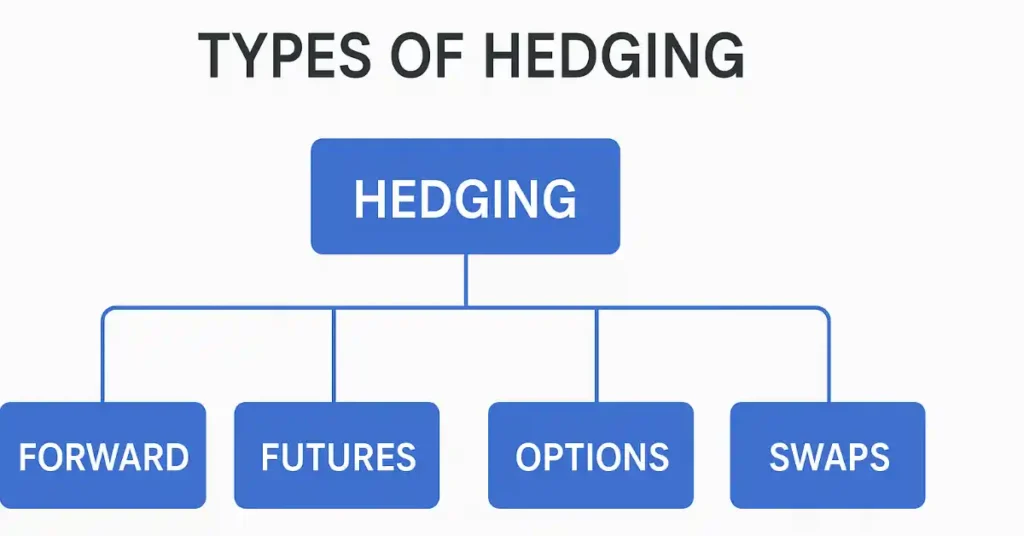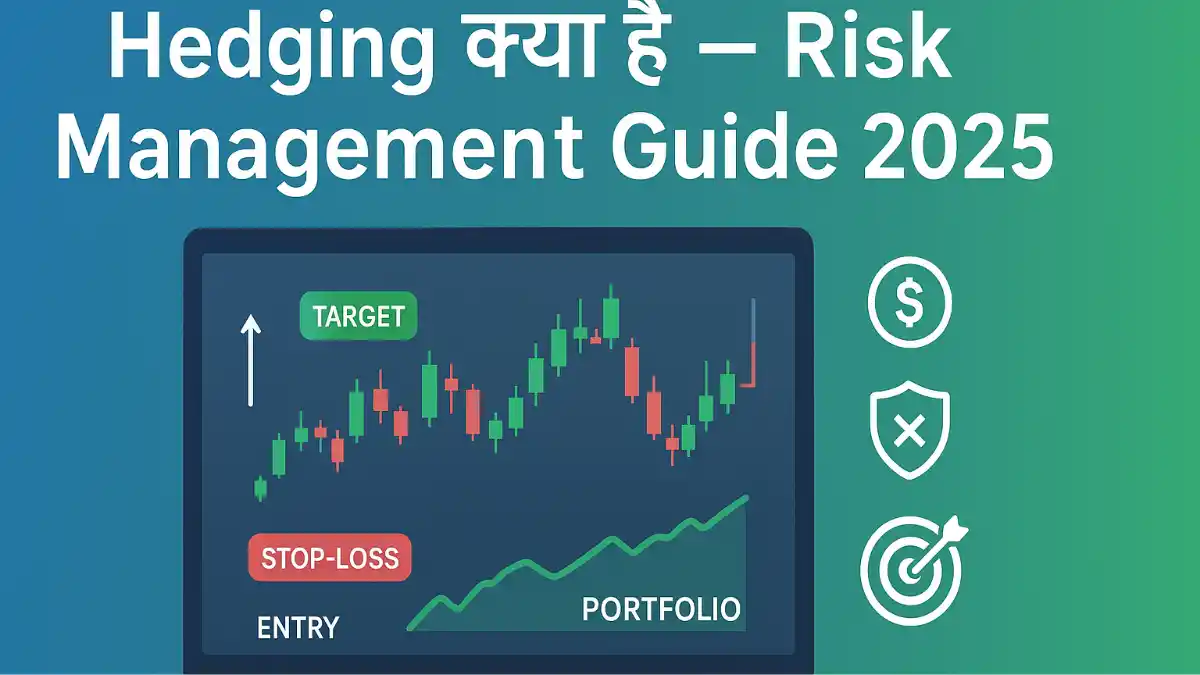Hedging kya hai ? Stock Market, Forex और Commodity में Risk कैसे Manage करें। Beginners के लिए आसान guide, strategies, tips और real-life examples
Introduction
आज के volatile market में हर investor और trader के मन में सवाल उठता है – Hedging क्या है? Stock market में prices कभी भी ऊपर या नीचे जा सकते हैं, और ऐसे में risk management की आवश्यकता बेहद जरूरी हो जाती है। Hedging एक ऐसी strategy है जो आपके investments को downside से protect करती है।
Stock market, commodity market और Forex trading में traders अपनी portfolios को सुरक्षित रखने के लिए विभिन्न Hedging strategies adopt करते हैं। Beginners के लिए Hedging समझना थोड़ा confusing हो सकता है क्योंकि इसमें futures, options, forward contracts, swaps जैसे technical terms आते हैं।
लेकिन basic idea बहुत simple है – “अगर market gir सकता है तो मैं अपनी investment को protect करूँ।” Futures और options जैसे instruments Hedging के लिए most popular tools हैं। Hedging केवल losses को control करता है, यह guaranteed profit नहीं देता।
इस ब्लॉग में हम cover करेंगे – Hedging meaning in Hindi, Hedging के प्रकार, Stock market, Forex और commodity में Hedging, Hedging vs Speculation, Portfolio Hedging tips, Advanced Hedging Techniques, Corporate Hedging in India, और FAQs।
इस guide को पढ़कर आप सीखेंगे कि कैसे smart hedging for traders एक महत्वपूर्ण skill है, चाहे आप beginner हों या experienced investor।
Hedging kya hai ? (Hedging Meaning in Hindi)

Hedging का मतलब है अपने investments को market की volatility से सुरक्षित रखना। साधारण शब्दों में – यदि आप किसी stock में invest करते हैं और price गिरने का डर है, तो आप एक opposite trade लेकर अपने loss को limit कर सकते हैं।
उदाहरण: आप Reliance का share खरीदते हैं और market girने का डर है। आप एक put option खरीद सकते हैं, जो आपके loss को cover करेगा। इस तरह, Hedging आपके portfolio को downside से protect करता है।
Hedging केवल stocks तक सीमित नहीं है। Futures, options, forward contracts और swaps जैसे derivatives भी Hedging के लिए उपयोग होते हैं। Hedging का main objective होता है – loss control करना, profit maximize करना नहीं।
Market में Hedging strategy use करना investors के लिए psychological comfort भी देता है। Traders confident रहते हैं क्योंकि उनका downside limited होता है। Hedging techniques अलग-अलग होती हैं – कुछ beginners के लिए simple होती हैं और कुछ advanced traders के लिए complex।
Hedging के benefits समझने के लिए real-life examples और stock market, forex, commodity market में इसके applications को भी देखना जरूरी है।
Real-Life Examples of Hedging
Hedging सिर्फ stock market तक सीमित नहीं है, यह हमारे रोज़मर्रा के जीवन में भी दिखाई देता है।
Car insurance एक classic hedge है। अगर accident होता है, तो insurance आपके financial loss को cover करता है। यही principle Hedging का है – risk को manage करना।
Farmers अपने crop के price गिरने से बचाने के लिए forward contract का इस्तेमाल करते हैं। उदाहरण के लिए, किसान अभी अपने wheat का price fix कर देता है ताकि harvest के समय market girने पर नुकसान न हो।
Exporters और importers अपनी currency risk से बचने के लिए hedging in Forex trading करते हैं। अगर USD/INR rate fluctuate करता है, तो companies forward contracts या options के जरिए अपने revenue को protect करती हैं।
Stock market में investors Nifty put options खरीदकर अपने portfolio को hedge करते हैं। Futures और options भी real-life Hedging का हिस्सा हैं।
Hedging का फायदा यह है कि आप extreme market movements से सुरक्षित रहते हैं और अपना financial planning predictable बना सकते हैं।
Stock Market में Hedging का उपयोग

Stock market में Hedging का primary use portfolio protection है। Traders और investors downside risk से अपने investments को सुरक्षित रखने के लिए Hedging strategies adopt करते हैं।
Portfolio Hedging: यदि आपके पास multiple stocks हैं और market girने का डर है, तो आप Nifty put options खरीद सकते हैं। इससे आपका portfolio सुरक्षित रहता है और loss limited होता है।
Futures Hedging: Futures contracts के जरिए आप अपना buying या selling price lock कर सकते हैं। यह especially short-term trading के लिए effective है।
Options Hedging: Put option खरीदकर आप downside risk को hedge कर सकते हैं। Call option sell करके भी short-term hedge possible है।
Hedging केवल loss को control करता है, profit guarantee नहीं करता। Advanced traders futures and options hedging strategies adopt करते हैं ताकि volatility के दौरान portfolio stable रहे।
Beginners के लिए Stock market Hedging simple instruments जैसे options से शुरू करना best रहता है। Regular monitoring और stop-loss levels set करना essential है।
Hedging के प्रकार (Types of Hedging)

Hedging के कई प्रकार हैं, जिन्हें traders अपनी जरूरत के अनुसार इस्तेमाल करते हैं। Common tools हैं Forward Contracts, Futures, Options और Swaps।
Forward Contracts: Buyer और seller future में एक fixed price पर asset को buy या sell करने का वादा करते हैं। Farmers इसे अपने crops के लिए use करते हैं।
Futures Contracts: Standardized contracts जो exchanges पर trade होते हैं। Futures का advantage liquidity और market fluctuations के खिलाफ protection है।
Options: Put और Call options का उपयोग। Put option खरीदकर आप downside risk cover कर सकते हैं। Call option sell करके short-term hedge possible है।
Swaps: Currency या interest rate risk manage करने के लिए corporates और institutional investors use करते हैं।
Simple Hedging strategies beginners के लिए options और futures तक सीमित रहती हैं। Advanced traders complex swaps और dynamic hedging techniques adopt करते हैं।
Hedging vs Speculation
Hedging और Speculation दोनों investment strategies हैं, लेकिन purpose और approach अलग होती है।
Hedging: इसका main goal है अपने existing investment को market risk से बचाना। Hedging risk को minimize करता है और portfolio की stability बढ़ाता है। Profit guaranteed नहीं होता, लेकिन potential losses limit किए जा सकते हैं।
Speculation: Speculation का उद्देश्य high returns earn करना है। Speculators risk लेते हैं और market movements के basis पर positions लेते हैं। यदि market favorable movement करे, तो high profits मिलते हैं, लेकिन losses भी बड़े हो सकते हैं।
Example:
- Hedging: आप Reliance shares के लिए put option खरीदते हैं ताकि downside risk limit हो।
- Speculation: आप Nifty या other index futures में high leverage के साथ position लेते हैं ताकि potential high returns मिलें।
Beginners के लिए Hedging अधिक safe approach है क्योंकि यह psychological comfort देता है और extreme market movements के दौरान portfolio को protect करता है। Speculation advanced traders के लिए suitable है जो market trends और analysis में confident हैं।
Hedging vs Speculation difference समझना बहुत जरूरी है ताकि सही investment और risk management strategy select की जा सके।
Hedging vs Diversification
Hedging और Diversification दोनों risk management tools हैं, लेकिन approach अलग होती है।
Diversification: Portfolio को multiple sectors और asset classes में invest करके risk spread करना। अगर एक sector में loss होता है, तो दूसरे sector के gains से impact कम होता है। यह long-term wealth building के लिए suitable है।
Hedging: Specific risk को opposite position के जरिए protect करना। उदाहरण के लिए, अगर आपने Nifty index में invest किया है और market गिरने का डर है, तो Nifty put option खरीदकर portfolio hedge कर सकते हैं।
Diversification passive approach है और long-term growth के लिए ideal है। Hedging active approach है और short-term volatility के दौरान portfolio safe रखने के लिए useful है।
Example:
- Diversification: Equity, Bonds, Gold, Real Estate में investment।
- Hedging: Futures और Options के जरिए specific asset का downside risk cover करना।
Beginners के लिए दोनों strategies combined use करना best है। Portfolio का एक हिस्सा diversified assets में invest करें और बाकी का short-term risk hedge करें।
Hedging और Diversification दोनों का सही use long-term financial stability और loss control में मदद करता है।
Futures और Options Hedging Strategies
Futures और options Hedging के सबसे popular tools हैं। ये strategies traders को market volatility से protect करती हैं।
Futures Hedging: Futures contracts standardized होते हैं और asset को future date पर fixed price पर buy या sell करने का commitment देते हैं। यह short-term risk control के लिए effective है। उदाहरण: अगर आपके पास 100 shares हैं और price गिरने का डर है, तो future contract sell करके loss limit किया जा सकता है।
Options Hedging: Options Hedging में Put और Call options शामिल होते हैं। Put option खरीदकर आप asset का downside risk cover कर सकते हैं। Call option sell करके short-term hedge possible है। Options flexible होते हैं और कम capital से hedge करने का option देते हैं।
Tips for Beginners:
- Simple put options से शुरू करें।
- Portfolio का risk assess करें।
- Stop-loss और entry levels set करें।
Advanced traders dynamic hedging, options spreads और pair trading strategies adopt करते हैं। Futures और Options Hedging strategies use करके investors extreme market movements में भी portfolio secure रख सकते हैं।
Hedging in Forex Trading
Forex market में Hedging बहुत popular है क्योंकि currencies high volatility दिखाती हैं। Traders और corporates exchange rate risk से बचने के लिए Hedging करते हैं।
Example: एक Indian exporter को 3 महीने में USD receive करना है। अगर INR strong हो जाता है तो profit कम होगा। Forward contract लेकर exporter अपना risk hedge कर सकता है। Similarly, traders opposite currency pair में position लेकर portfolio balance कर सकते हैं।
Hedging Techniques in Forex:
- Forward Contracts: Fixed rate पर future transaction secure करना।
- Currency Options: Exchange rate की downside protection।
- Swaps: Long-term currency risk cover करने के लिए।
Hedging in Forex risk को control करता है और volatility के दौरान portfolio stable रखता है। Beginners के लिए simple forward contracts और currency options अच्छे starting tools हैं। Advanced traders dynamic positions और multiple currency swaps use करते हैं। Hedging in Forex एक crucial risk management tool है, खासकर international trade और cross-border investment में।
Hedging in Commodity Market
Commodity market में Hedging का main goal है price fluctuations से बचना। Farmers और companies अपने raw material cost और production price को hedge करते हैं।
Farmers Example: Wheat, sugar, या cotton का future contract use करके market girने से बचाव।
Companies Example: Manufacturing companies अपनी raw material cost hedge करती हैं। Gold, silver या oil futures contracts buy करके future cost lock कर सकते हैं।
Commodity Hedging के methods:
- Futures Contracts: Price lock करने के लिए।
- Options Contracts: Upside और downside risk cover करने के लिए।
- Forward Contracts: Private agreement में asset future में fix price पर sell/buy करना।
Hedging in Commodity Market losses minimize करता है और production planning आसान बनाता है। Advanced traders options spreads और cross-commodity hedging भी adopt करते हैं।
Best Hedging Strategy for Beginners
Beginners के लिए simple और effective Hedging strategies adopt करना जरूरी है।
Simple Strategies:
- Stock के against Put Option खरीदना।
- Index Put Option से portfolio hedge करना।
- Short-term futures contracts use करना।
Tips:
- Portfolio का risk assess करें।
- Over-hedging avoid करें।
- Small capital से शुरू करें।
Beginners को Hedging में focus loss control पर रखना चाहिए, profit guarantee की उम्मीद नहीं रखनी चाहिए। Start small और gradually advanced strategies सीखें। Smart Hedging for traders beginners को psychological comfort भी देता है और market volatility में confident बनाता है।
Corporate Hedging in India
Large corporates corporate hedging in India use करते हैं ताकि currency, interest rate और commodity price risk से बचा जा सके।
Examples:
- Airlines: Fuel cost hedge करती हैं।
- Exporters: Currency income hedge करते हैं।
- Importers: Swaps और forward contracts use करते हैं।
Methods:
- Futures और options contracts।
- Currency swaps और interest rate swaps।
- Forward contracts for import/export transactions।
Corporate Hedging risk management का integral part है। Advanced financial tools use करके corporates अपने balance sheet और profits protect करते हैं।
Advanced Hedging Techniques
Advanced traders और institutional investors complex strategies use करते हैं।
Dynamic Hedging: Portfolio की risk continuously monitor और adjust करना।
Pair Trading: Correlated assets के बीच long और short positions लेकर hedge करना।
Options Spreads: Multiple options combine करके risk control करना।
Currency Swaps: Long-term currency risk hedge करना।
ये strategies high expertise और capital require करती हैं। Beginners को पहले simple options और futures strategies master करनी चाहिए।
Hedging के लाभ
- Loss minimize होता है।
- Portfolio stable रहता है।
- Risk management आसान होता है।
- Psychological comfort मिलता है।
- Short-term और long-term planning possible होती है।
Hedging investors और traders को extreme market movements से बचाता है और financial planning predictable बनाता है।
Hedging की सीमाएँ
- Perfect hedge हमेशा possible नहीं।
- Derivatives for hedging में cost लगती है।
- Beginners के लिए complex।
- Over-hedging से unnecessary cost बढ़ सकती है।
Hedging losses को control करता है, profit guarantee नहीं देता। Traders को Hedging use करते समय cost-benefit analysis जरूर करना चाहिए।
Risk Management और Hedging
Risk management में Hedging एक essential tool है। Portfolio को volatile market से बचाने के लिए Hedging adopt की जाती है।
Techniques:
- Stop-loss orders
- Put options
- Futures contracts
- Dynamic adjustments
Hedging investor को confidence देती है और risk exposure manage करती है। Beginners को simple strategies से start करना चाहिए और धीरे-धीरे advanced tools सीखने चाहिए।
Indian Stock Market Hedging Tips
- Simple options से hedge करें।
- Over-hedging avoid करें।
- Portfolio size के हिसाब से hedge करें।
- Regular monitoring करें।
- Beginners small capital से start करें।
Smart Hedging for traders confidence और portfolio stability बढ़ाता है। Risk और potential losses के हिसाब से strategies choose करना जरूरी है।
Hedging के Myths
- Hedging हमेशा profit देती है – गलत।
- Hedging free है – गलत।
- Hedging सिर्फ experts के लिए है – गलत।
- Hedging से short-term loss guarantee होती है – गलत।
Hedging का main goal होता है loss control करना। Beginners और experienced traders दोनों को Hedging के myths समझकर सही use करना चाहिए।
Conclusion
Hedging portfolio protection और risk management का crucial tool है। Futures, Options और swaps help करते हैं। Beginners और advanced traders दोनों के लिए जरूरी skill है।
Key Takeaways:
- Loss minimize
- Portfolio stable
- Futures/Options common tools
- Hedging vs Speculation और Diversification समझें
- Corporate Hedging India में widespread
Smart Hedging confidence और stability देता है। Traders और investors को अपने risk appetite के अनुसार strategies adopt करनी चाहिए।
FAQs
- Hedging क्या है stock market में?
Answer: Hedging अपने investments को market risk से protect करने की strategy है। यह loss minimize करता है, guaranteed profit नहीं देता। - Hedging meaning in Hindi क्या है?
Answer: Hedging का मतलब है अपने निवेश को market की volatility से सुरक्षित रखना। यह financial risk को manage करने का तरीका है। - Hedging vs speculation difference क्या है?
Answer: Hedging risk minimize करता है, speculation risk लेकर profit earn करने की कोशिश। Hedging सुरक्षित, speculation risk-oriented है। - Hedging vs diversification क्या है?
Answer: Diversification multiple assets में invest कर risk spread करता है। Hedging specific risk को opposite position से cover करता है। - Futures और options hedging strategies कैसे काम करती हैं?
Answer: Futures fixed price पर asset buy/sell lock करते हैं। Options put/call के जरिए downside/short-term risk protect करती हैं। - Best hedging strategy for beginners कौन सी है?
Answer: Beginners के लिए simple put options, index put options, और short-term futures best starting strategies हैं। - Hedging in forex trading कैसे होती है?
Answer: Exporters और importers forward contracts, currency options, swaps के जरिए currency risk hedge करते हैं। - Hedging in commodity market कैसे होती है?
Answer: Farmers और companies futures, options, forward contracts से crop/raw material price fluctuations से बचते हैं। - Portfolio hedging कैसे करें?
Answer: Put options, index options और short-term futures से portfolio risk assess और hedge किया जा सकता है। - Corporate hedging in India क्यों जरूरी है?
Answer: Corporates fuel, currency, interest rate risk से profits और balance sheet protect करने के लिए hedging करते हैं। - Option hedging strategies क्या होती हैं?
Answer: Put और call options buy/sell करके asset या portfolio का downside/short-term risk control करना। - Risk management in stock market में hedging का role क्या है?
Answer: Hedging market volatility से portfolio को protect करता है और risk exposure manage करता है। - Forward contract example बताइए।
Answer: किसान अपने wheat का price harvest से पहले fix करता है ताकि market girने पर नुकसान न हो। - Derivatives for hedging कैसे काम करते हैं?
Answer: Futures, options, swaps derivative instruments हैं जो risk cover करने के लिए opposite position लेते हैं। - Indian stock market hedging tips क्या हैं?
Answer: Simple options use करें, over-hedging avoid करें, portfolio size के हिसाब से hedge करें। - Advanced hedging techniques in trading कौन सी हैं?
Answer: Dynamic hedging, pair trading, options spreads, currency swaps advanced strategies हैं। - Smart hedging for traders क्या होती है?
Answer: Portfolio को market volatility से secure करने वाली strategic approach को smart hedging कहते हैं। - Hedging beginners के लिए कैसे useful है?
Answer: Beginners को loss limit करने और confidence build करने में मदद करती है। - Hedging से हमेशा profit होता है क्या?
Answer: नहीं, Hedging केवल loss minimize करता है, guaranteed profit नहीं देता। - Hedging free होती है क्या?
Answer: नहीं, Hedging instruments जैसे options/futures में cost और premium लगता है।
Disclaimer
यह ब्लॉग केवल शैक्षिक और जानकारी के उद्देश्य से है। इसमें दी गई जानकारी निवेश सलाह नहीं है। Hedging, stocks, options, futures या अन्य financial instruments में निवेश से पहले हमेशा अपने risk और financial goals का मूल्यांकन करें और विशेषज्ञ से परामर्श लें।

